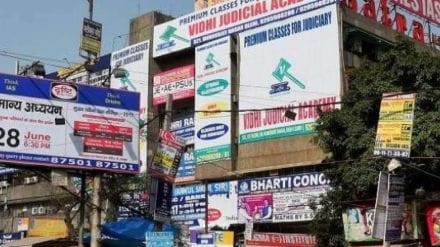By Sridhar Rajagopalan
Responding to various reports of pressure on students even leading to suicides in some cases, accidents like fires at coaching centres, inadequate facilities and misleading ads, the Centre has released a set of guidelines for coaching centres earlier this year.
This step have been welcomed by many – they make the case for guidelines based on concerns about stress on students that has been discussed in various fora including parliament; they call for coaching centres to be registered, to have minimum norms for infrastructure, teaching, maintenance of records, inclusivity, provision of counsellors, timings, etc. and to not admit students below the age of 16, They even talk about a process of complaints against centres, penalties, the provision to cancel licenses and an appeal process in those circumstances.
All of this looks good at first glance, while the most significant point that catches one’s attention is that students below the age of 16 should not be admitted to coaching classes. This feels unrealistic, because though formal statistics are not easily available, it is a common experience that a majority of children in schools in our large cities do attend some kind of tuition or coaching classes. Will that be stopped now? Can it be?
The guidelines themselves acknowledge that the matter comes under state governments and only states can enforce them. Further, they define a coaching centre as only one with more than 50 students, excluding those with less and even those that creatively show that they have less than that number officially. For both these reasons, in the current form, these are suggestions at best.
Firstly, let us agree that the larger goal is that students achieve excellence in their areas of interest and strength without being subject to undue pressure or stress. Collectively, this excellence has to be at the international level – our system should produce world class students, not merely by virtue of our huge population, but in proportion to that.
Secondly, India has an energetic and vibrant private sector – if we don’t use it well, it will manifest itself in negative ways. Tuition and coaching classes are possibly the best example of that.
Thirdly, coaching is a socio-cultural phenomenon. Coaching classes are responding to parental demand which is – more often than not – merely a manifestation of intense parental desire that their children do well and score high marks and the reality they see around them that other parents – across socio-economic strata – are sending their children to coaching classes.
Fourthly, though it manifests itself in uniquely Indian ways, coaching is not a unique Indian problem. South Korea is considered very successful both economically and educationally. Yet, it has a severe coaching problem and the state has squads to enforce “study curfews” to ensure no tuition class is open after 10pm!
The above should convince us that the challenge of coaching cannot be legislated away, nor can it be ‘stamped out’ through ‘strict implementation’. Can we instead make coaching a partner to achieve the larger goal of better learning without stress?
I believe it is possible if we are willing to make key changes in the education system. Fortunately, these changes are in line with the recommendations of the National Education Policy 2020 (NEP), and to some extent, are already being implemented.
The first step is to change the questions in our exams – starting with Board Exams – to more understanding and critical-thinking based questions like in the best countries or international tests like PISA (Programme for International Student Assessment). This is in line with the push by the NEP and CBSE to move towards competency-based questions.
The second step is to harness the power of anyone – including in the private sector – who is willing to support this. For this it is important that high-quality organisations and professionals enter this sector – which will not happen if special limitations are put, for example, on coaching centres with more than 50 students. Such organisations can also play a key role in training teachers to teach so students are able to answer questions based on critical thinking.
The third step is to require all organisations involved in teaching students – whether schools or coaching classes – to undergo independent external assessments conducted by empanelled partners every year. Some countries like the UAE have adopted this model very effectively and have raised the level of learning in their schools dramatically. Many of the schools that are doing well – ironically – are Indian schools teaching CBSE and ICSE curriculum but significantly outperforming their counterparts in India!
Finally, we need public education campaigns aimed at parents explaining to them how they can help children understand well and aim for excellence and make the shift from earlier paradigms which focussed narrowly on maximising marks, rote learning or traditional subjects and careers. If these are explained, parents will become partners as they will see that they have a key role in shaping their wards and the nation’s future.
Coaching thus, is only the tip of the iceberg. It is a symptom of a deeper problem, but fortunately, can be a lever to solve that deeper problem. We should use this opportunity to bring in reforms which are extremely important if India is to fulfil its economic and human aspirations in the coming decades.
The author is co-founder and chief learning officer at Educational Initiatives (Ei). Views are personal.
